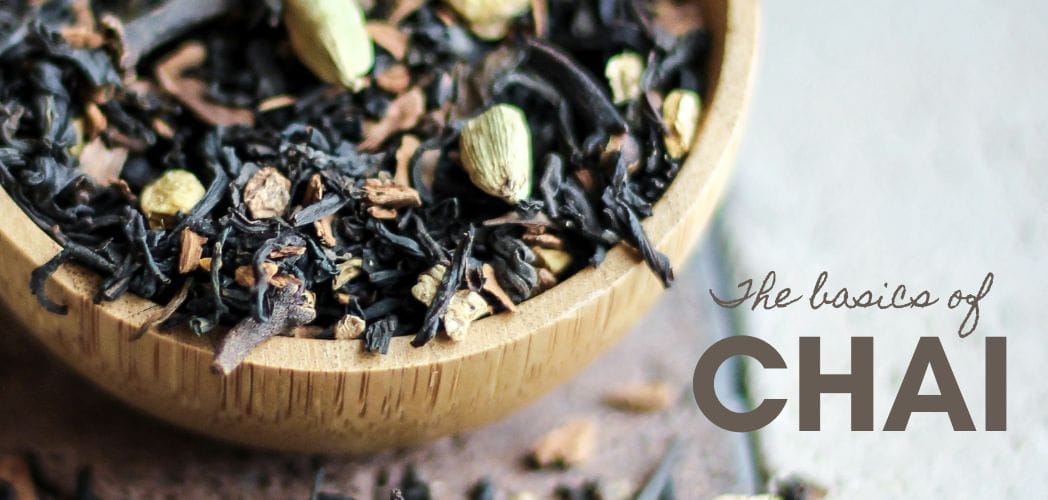The Basics of Chai
Whether it’s a quick latte pickup from your local coffee or tea shop or a comforting cup brewed at home, chai brews have an incredibly long history, and we’re here to give you the basics of this incredibly popular tea!
You’re likely familiar with a classic “chai tea,” but did you know that “chai” literally means tea? Derived from the Chinese version of the word “cha,” “chai” is the Hindi word for tea, which means that “chai tea” translates to “tea tea.” It’s a common mistake many of us make, but pull that fun fact out the next time you want to prove your tea connoisseur status to your friends!
Regardless, chai is said to date back more than 5,000 years, when a king in what is now India’s state of Gujarat ordered a beverage to be created for the traditional medicinal practice of Ayurveda. This original blend, unlike modern counterparts, did not contain tea leaves, milk, or sugar. Instead, it was made from a combination of ginger, black pepper, cloves, cardamom, cinnamon, and star anise. In 1835, when the British began production on tea farms in Assam, India, the black teas produced there were often too expensive for the locals to consume. To keep costs down, they used a smaller amount of tea leaves and combined them with milk, sugar, and chai spices to create a flavorful brew that stretched further. Termed “Masala Chai,” or “Spiced Tea,” the blend spread throughout India and quickly became a national drink.
It should be noted, however, that there is no fixed recipe, combination, or preparation method for chai since each household had its own recipe for the spice mixture, though these mixtures still typically contained some variation of ginger, black pepper, cloves, cardamom, cinnamon, and star anise, just as the original Ayurvedic blends did. Additionally, while traditionally chais are made with broken orange pekoe or other black teas, today a wider variety of teas are used, including rooibos, mate, Pu-erh, and white teas, which makes for endless possibilities in the realm of chai. For instance, our Masala, Nirvana, Fava’s Classic Chai, and Vanilla Spice are all made with black tea, the Roasted Almond Chai and Rooibos Chai both start with a base of rooibos, the Temple Spice contains Pu-erh, White Angel is made with white tea, and the Samurai blend is a mixture of mate and rooibos.
Caffeine contents and health benefits can vary based on the ingredients included in each blend and by the consumer, but chai blends may generally assist with improving digestion, increasing energy and alertness, reducing inflammation, and boosting your immune system with antioxidants. It should also be noted that pure herbal blends like Yoga may also fit well within the broader category of brews that could be called “chai.” This blend of cinnamon, hawthorn petals, ginger, cloves, black pepper, and cardamom features many of the traditional spices used in India and is a delicious alternative for those looking for a caffeine-free chai alternative.
Today, chai remains incredibly popular and is often featured on menus as a latte option. For more information on how to brew the perfect latte, we have a post on that! It’s as easy as combining a concentrate of your favorite tea with a milk of your choice.
To shop the entire Fava Tea Company Chai Collection, click here, but no matter how you enjoy your chai brews this year, we hope that they bring a bit of spice to your life!



There are no reviews yet.